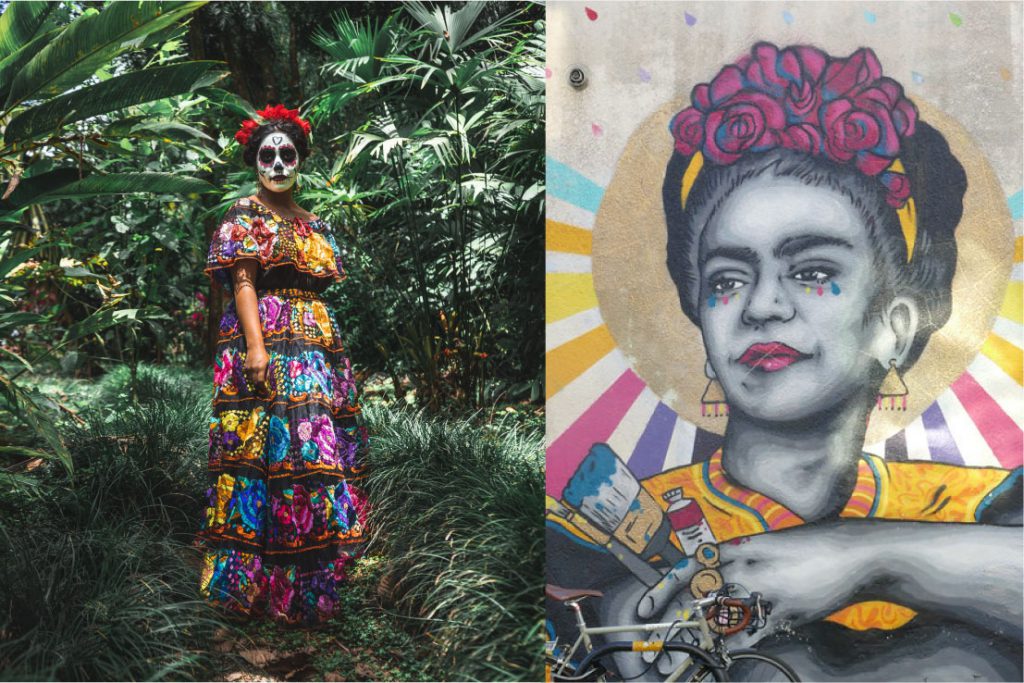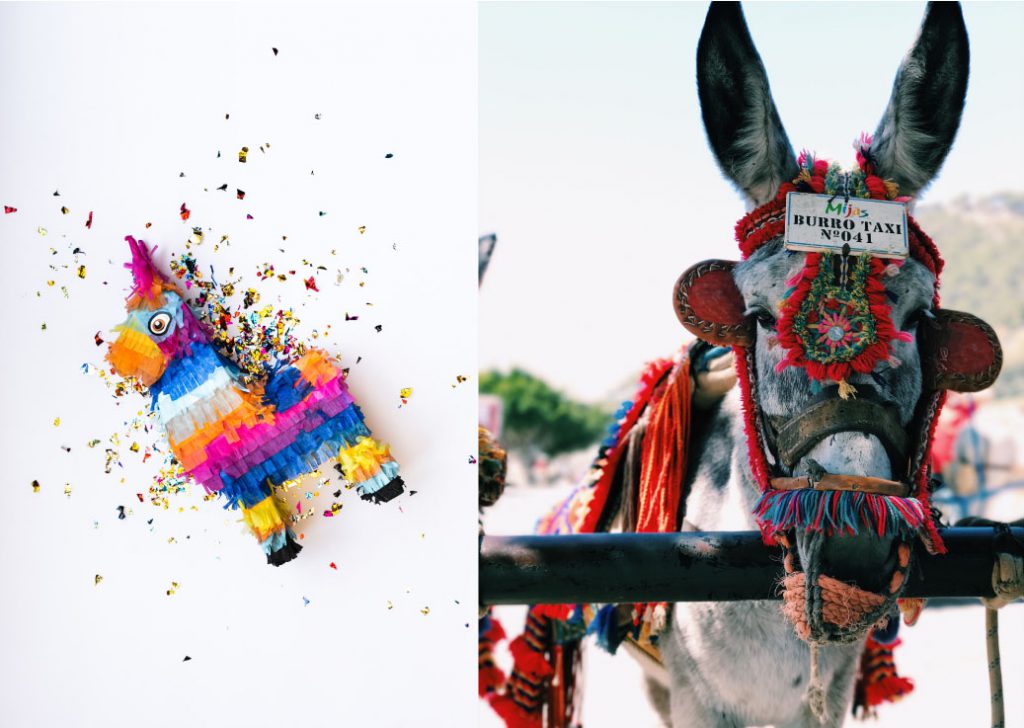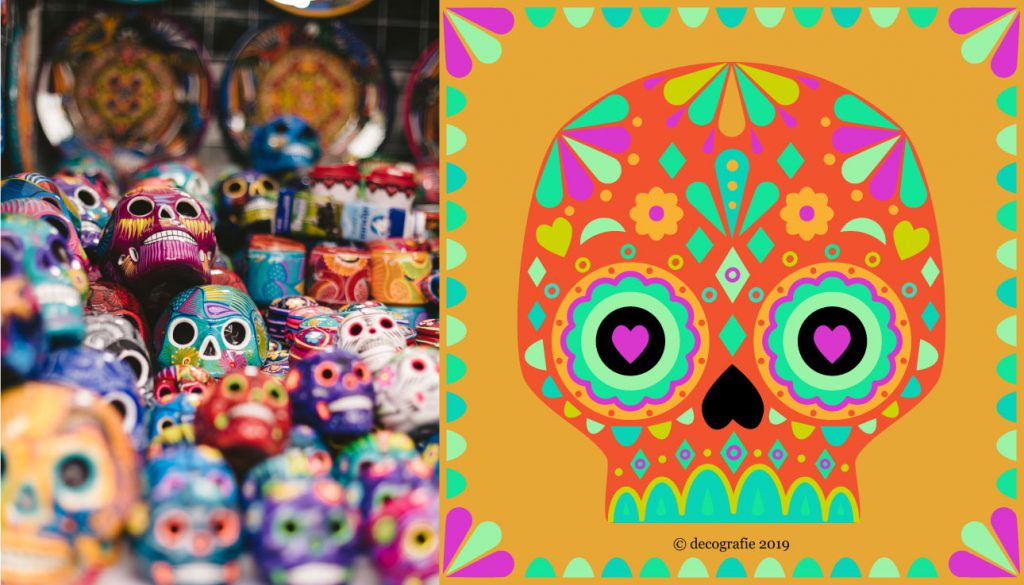
Photos by Miguel Bruna and Loz Pycock
The famous Mexican painter of German ancestry, Frida Kahlo, worked the physical and emotional pain of her tragic life in her paintings, where real elements merged with fantasy. Her naive artistic style is inspired by traditional Mexican folk art. On numerous self-portraits, and in her everyday life, she liked to wear colourful Tehuana costumes and updos with flowers, like the women of Oaxaca and expressing her connection to her indigenous roots. Even if she did not correspond to the common ideal of beauty, she was on the cover of Vogue in 1939. After her death in 1954, her husband Diego Rivera decreed to keep Frida’s personal wardrobe locked for 50 years. To this day, her style inspires the fashion world. She was also involved in social and political issues and she became the icon of the American-Mexican Chicano Civil Rights Movement in the 1960s. Today she is a cult figure of feminism and gender equality. Her face is depicted on t-shirts and many other products.

Photos by Brenna Huff and Caleb Strokes
Mexican Folk Art
When it comes to Mexican handicrafts, many first think of the design of the Aztecs and Mayas. The embroidery of the Otomi, an indigenous people in the Central Mexican highlands, can be traced back to pre-Columbian roots, and shows colourful motifs of native flora and fauna, symbolizing the harmony between man and nature. Through the conquest of the Spaniards, there was a so-called Folk Catholicism. Milagros (span wonder, surprise) are amulets (usually in the form of a heart) that are put down on altars in gratitude for fulfilling a request. Piñatas are colourful figures made of cardboard (formerly made of clay), filled with sweets, which are now used at children’s birthday parties. Originally a Chinese New Year tradition, the custom was practiced in southern Europe during Lent. The Mayans also smashed brightly painted clay pots to honour their gods.

Photo by Jeremy Lwanga, illustration by Heike Schick
Dias de Muertos
Dias de Muertos (Day of the Dead) is a three-day colourful Mexican folk festival, celebrated in honour of those who have passed, and is based on ancient indigenous customs. It lasts from the eve of All Saints’ Day to All Souls’ Day, where the Christian faith mingles with old Mexican ideas of death. The reunion with the deceased is celebrated with music, dancing and good food. At personal altars, ofrendas (offerings) such as photos, memorabilia and the favourite foods of the deceased are set up and decorated with skulls, skeletons and flowers. Calaveras de Azúcra are edible skulls made of sugar, chocolate or marzipan with a colourful design that symbolizes rebirth. Bright orange marigolds, yellow chrysanthemums and cempasúchil, the “flor de los muertos” show the souls of the dead the way. UNESCO has declared the festival to be an immaterial World Heritage Site. Inspirationen.
